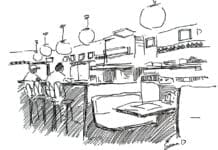Romantic love involves both the experience of affectionate feelings and the outward expression of those feelings. No matter how deep your feelings of love are, your partner can only know that you love them if you frequently, openly express that love.
And if you want your partner to know for sure that you love them, you need to know which actions say “I love You” more strongly than others.
Spoiler alert: grand gestures, good sex, and saying “I love you” help, but that’s not what matters most – not by a long shot.
Two Surprisingly Powerful Ways to Express Your Love
Express Positive Feelings: According to relationship expert John Gottman, one important way couples show their love for one another is by “nurturing their fondness and admiration for each other”. This requires romantic partners to continually develop the positive internal feelings they have for one another. To do this, couples mutually express positive feelings, focus on each other’s positive qualities and their good times.
Express Interest in Your Partner: We all know that there is more to a couple’s life than exchanging compliments and reliving good times. There are jobs, housework, food prep, parenting, community involvement, extended family obligations, friends, hobbies, etc. So, another important way successful couples express their love for one another is to embrace the day-to-day opportunities to express genuine interest in their partner’s feelings and experiences. Gottman refers to these small opportunities for connection as “bids” for attention, affection, humor, or support. Partners can respond to each bid by either “Turning Toward” the other or by “Turning Away” or “Turing Against”. Routinely Turning Toward your partner sends a powerful loving message.
Why “Turning Toward” Each Other Is So Important
Turning Toward your partner includes paying attention and responding to your partner’s comments with interest, as well as initiating small, intentional moments of kindness and connection. Turning Away includes ignoring or brushing off your partner’s comments while Turning Against involves a critical response that blatantly rejects your partner’s bid for attention or support.
How couples respond to small, day-to-day opportunities for connection is fundamental to the future of their relationship. Partners who Turn Toward one another most of the time are more likely to stay happily married because Turning Toward your partner forms the basis of trust, emotional connection, passion, and a satisfying sex life. Couples who most often turn away from one another are more likely to end up divorced because frequently Turning Away erodes their positive connection.
Positive Responses More Important Than How You Fight
How you and your partner respond to each other’s bids for connection may be more important than how you fight. And you can make a surprisingly powerful impact on your romantic relationship by responding constructively to your partner’s enthusiastic interests, achievements, successes, and even the positive little things that happen to them daily.
So, although it may be important to learn how to fight better, it is even more important to learn how to express your love through active, constructive responses to your partner’s bids for connection, especially when your partner shares their positive interests, good events, and stories of things that went right.
Active Constructive Responding – Your New Superpower
You can respond to your partner in one of four basic ways. But Psychologist Shelly Gable’s research shows that only Active Constructive responses express the strong loving feelings that enhance a romantic relationship. Here’s an example:
Your Partner enthusiastically shares: “I was asked to train the new guy at work!”
Active – Constructive: That is so great! I am so proud of you. I know you really want to become a supervisor, and this shows they are grooming you for that. Start at the beginning and tell me everything. How did they ask you? What did they say? (Nonverbal: Direct eye contact, Positive Emotion, e.g. smiling, touching, laughing – Turning Toward).
Passive – Constructive: That’s good news. You will be good at it. (Nonverbal: little active emotional expression).
Active – Destructive: That’s a lot of responsibility. Are you sure you’re up to it? Will you have to work more but for the same pay? (Nonverbal: Displays negative emotion, e.g. frowning, furrowed brow),
Passive – Destructive: What time is dinner? I’ve got to respond to this text. (Nonverbal: Little eye contact, focused on phone – Turning Away).
If you want your partner to know for sure that you feel love for them, try Turning Toward your partner using Active-Constructive responses to their bids for connection, especially when they share something they feel good about. This is a surprising powerful way to express your love and an easy habit to learn.
Let me know if I can help.
Jamie C. Williamson, PhD is a FL Supreme Court Certified Family Mediator and Couples Counselor who is part of the Gottman Referral Network. She is an owner and partner at Amity Mediation Workshop, a mediation practice specializing in “friendly divorce” mediation and psycho-educational counseling for couples. Dr. Jamie speaks frequently on relationship topics and authors the blog “Work it Out.” You can find her online at amitymediationworkshop.com.






















































